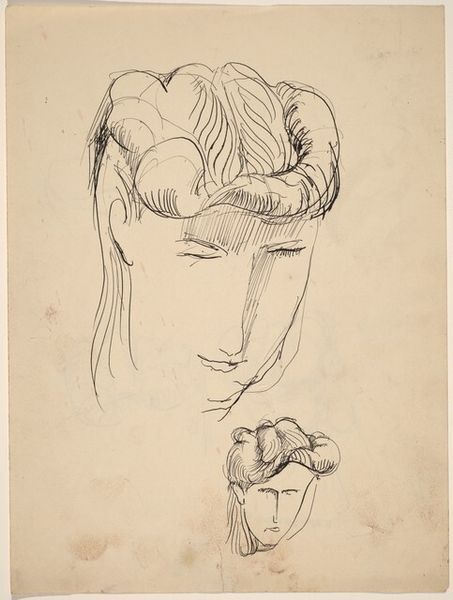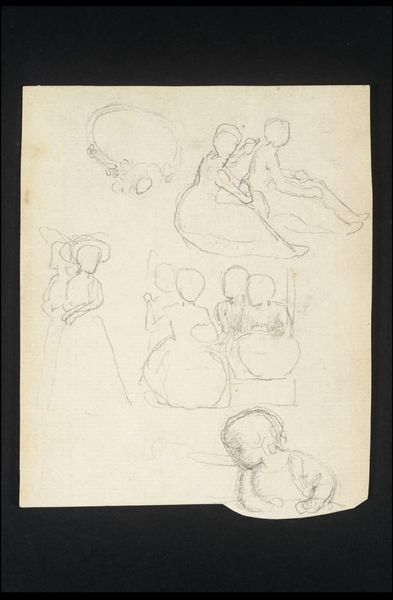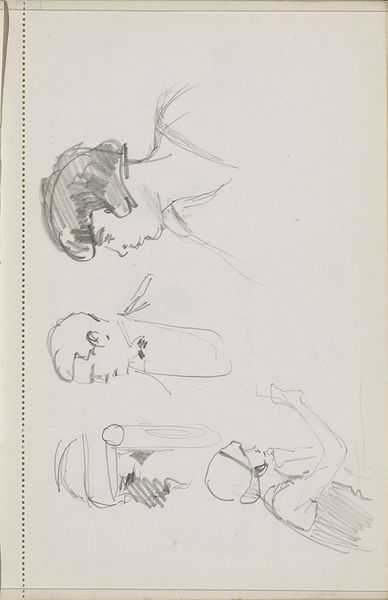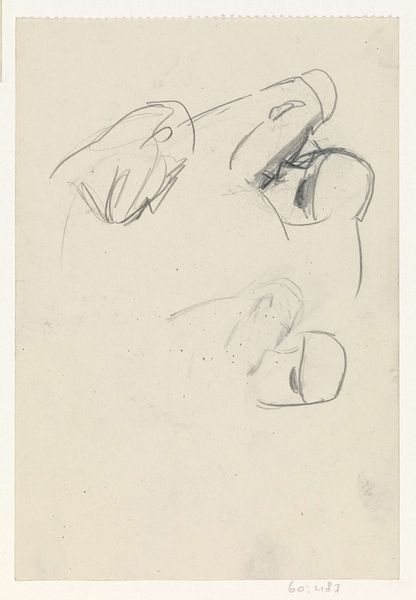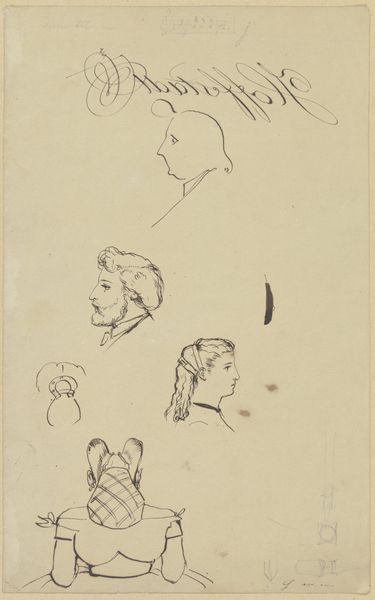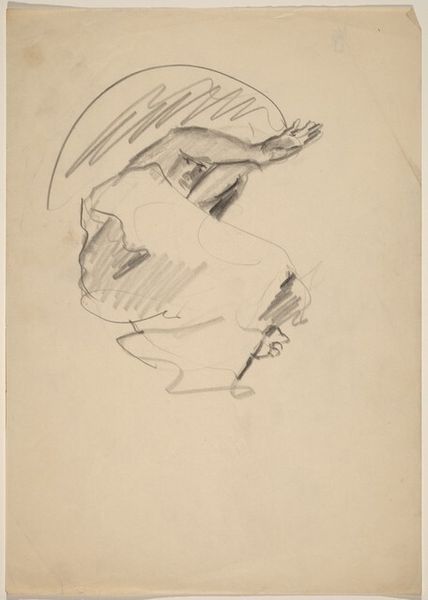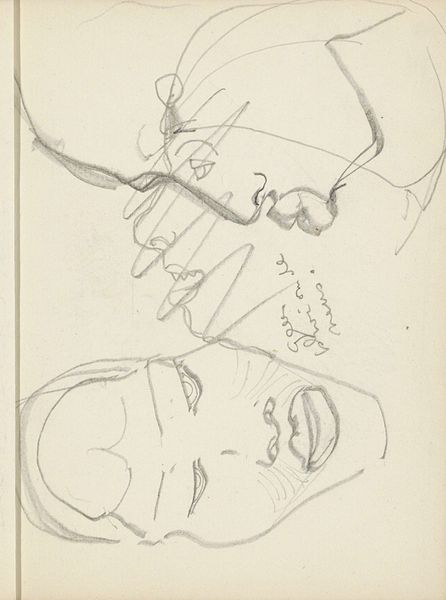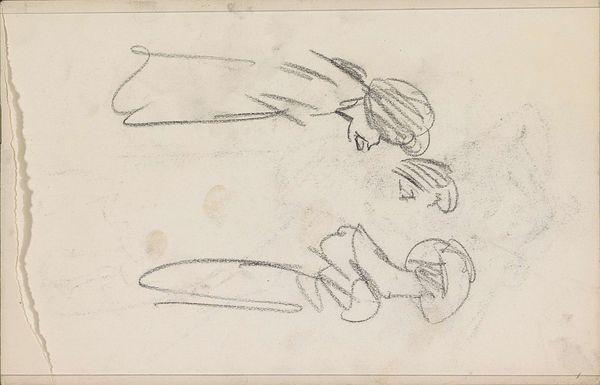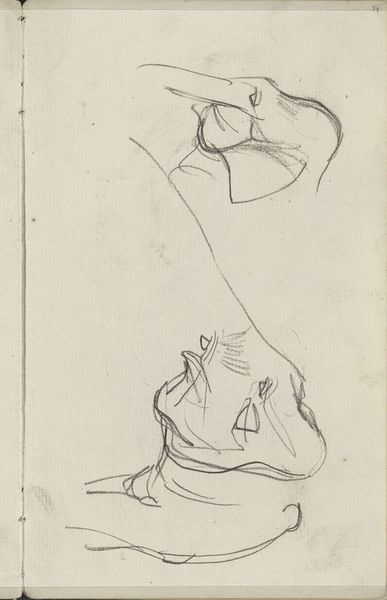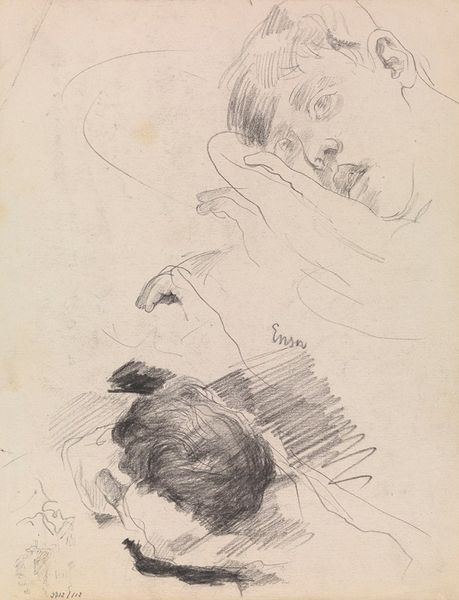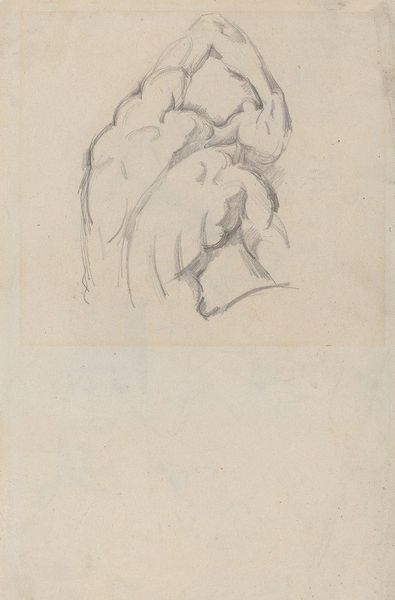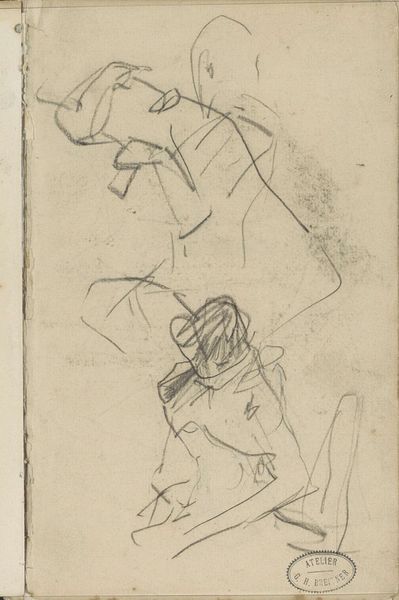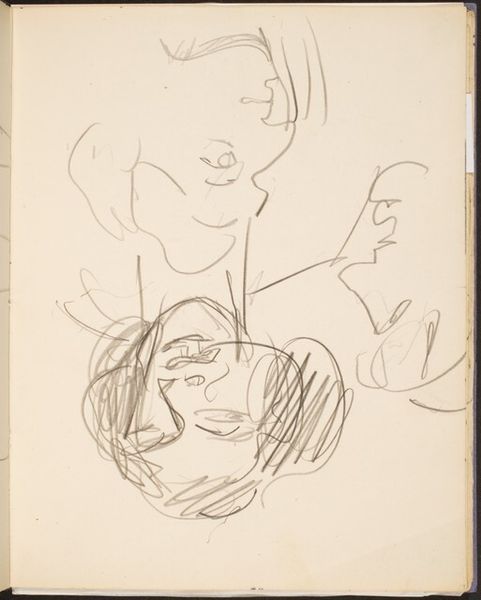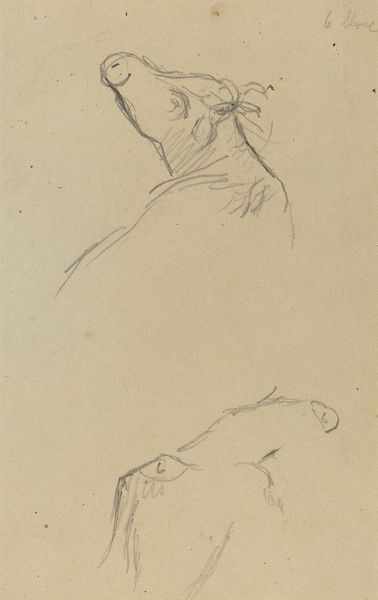![Studies of a Woman's Hair [verso] by Mark Rothko](/_next/image?url=https%3A%2F%2Fd2w8kbdekdi1gv.cloudfront.net%2FeyJidWNrZXQiOiAiYXJ0ZXJhLWltYWdlcy1idWNrZXQiLCAia2V5IjogImFydHdvcmtzL2E0Y2E4ZjZhLWQxNWMtNGI5OC1iZTZkLTM5NGZhYmMyYzc0Ni9hNGNhOGY2YS1kMTVjLTRiOTgtYmU2ZC0zOTRmYWJjMmM3NDZfZnVsbC5qcGciLCAiZWRpdHMiOiB7InJlc2l6ZSI6IHsid2lkdGgiOiAxOTIwLCAiaGVpZ2h0IjogMTkyMCwgImZpdCI6ICJpbnNpZGUifX19&w=1080&q=75)
drawing, ink
#
portrait
#
drawing
#
ink drawing
#
figuration
#
ink
Dimensions: overall: 30.5 x 22.8 cm (12 x 9 in.)
Copyright: National Gallery of Art: CC0 1.0
Curator: This ink drawing, "Studies of a Woman's Hair [verso]," appears to be by Mark Rothko, though the date is unknown. The verso part of the title makes me think that it’s maybe more about Rothko’s process than a polished, finished work. Editor: The way the lines loop and swirl definitely give a sense of restless energy, and it being on the back of something else gives it the aura of a quick experiment that maybe felt private for Rothko. The ink is so dark in some places it gives a sense of gravity to these upward hairstyles. What kind of a feeling do you get from it? Curator: Definitely private, almost stolen. The woman's eyes are always cast down, like she’s lost in thought or perhaps caught unawares. I get a sense of melancholic introspection. Hair is so fascinating, right? A signifier of identity, social status, adornment but also something deeply personal. Like a veil. Editor: Absolutely, the symbolism of hair is rich—both culturally and personally. Throughout history, its connection to femininity, control, and even rebellion makes it ripe for unpacking ideas about women. And it is impossible to ignore what it could communicate about class. With the different hairstyles represented, who gets access to such stylings? Where are they displayed? Is this a comment on beauty standards in a particular class? Curator: The mystery! This is clearly not his later, well-known style, but maybe this type of figuration—and particularly his intimate observation of his subjects —is where Rothko starts finding abstraction, reducing the human form to its essence, before completely diving into fields of color and emotion. This feels like an important point along the road. Editor: You can feel him reaching for something there! I am struck by the tension of something in-between worlds. There’s an appealing contrast between what might read as traditional portraiture, with its careful study of a subject, against something more modernist, abstract, and socially aware. I like to be aware of the friction here. Curator: In its incompleteness and quiet beauty, it speaks volumes. These tentative lines hold so much. Editor: Absolutely. It encourages us to ask questions about its context and legacy, and those are usually the best kind.
Comments
No comments
Be the first to comment and join the conversation on the ultimate creative platform.
